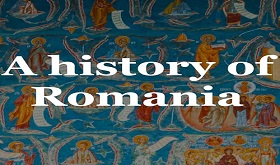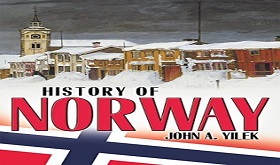The History of Finland
Finland is a wonderful country everyone knows around the world.
The Republic of Finland is a Nordic country that is situated in Northern Europe, which is also called the happiest country on the planet. The famous capital of the nation is Helsinki, which has around 300 islands in its archipelago and a 100Km of shoreline. The locals all across the nation are really useful and amicable. Finland is also the world’s sauna capital with over 3.3 million saunas.
It is the eighth-largest country in Europe which is also the most sparsely populated with an area of 338,455 Km2 and a population of more than 5,536,146. The nation has a long history out of which, we will be covering only the essentials in this piece.
Paleolithic:
The most seasoned archeologic site discovered in Finland is a wolf cave which is the only Neanderthal Archeological Site of the Nordic region which is estimated to be as old as 125,000 years old.
Mesolithic:
It was around 9000 BC that cutting edge Finland saw the finish of its last ice age and individuals belonging to Veretje, Kunda, and Butovo originally migrated to the area from South and South-East, inhabiting it from the coast of Norway. Proof of early human settlement is viewed as old as 8900 BC. There were generally trackers and fishers. The most seasoned realized fishing net to have at any point been excavated has also been found from Finland.
Neolithic:
Proof recommends that stoneware was available in current Finland as early as 5300 BC which were found to have belonged to Brush Ceramic Culture. During fifth thousand years BC, a broad organization of exchange was created across Finland as well as with north-east Europe. There have been giant stone designs/fenced in areas found which have been seen as to date as far back as 3500 – 2000 BC. The motivation behind these designs is obscure. The occupants of that time have been viewed as broadly engaged in trading.
Traces of practicing agriculture and animal husbandry have also been found that were dated back to second thousand years BC. However there are demonstrates of various societies to have either coexisted or existed individually at various times around 2300 to 1500 BC, the era is characterized by the existence of Kiukainen culture with brush ceramic tradition with line ceramic characteristics.
Bronze Age:
It started soon after 1500 BC, with the coastal region being part of the aggregate Nordic Bronze culture. The inland regions were introduced to using bronze from eastern and northern Russia.
Iron Age:
The iron age began in 500 BC and lasted as late as 1300 AD. These records are more tangible and recorded due to the Swedish invasion, which was a part of thirteenth century northern crusade. Be that as it may, any local record of the Finnish nation of the said era was rarely found. However there are several secondary sources like composed letters and descriptions by pariahs and visitors.
The Roman Invasion (1 – 400 AD):
As the Roman time frame begins, it indicates an influx of various artifacts that were introduced to the region, for example, diapers and wine glass. The Finnish culture stabilized during this period as well as flourished such a lot of that the majority of the gold treasures that were excavated have been found to belong to the said era.
Migration Period (400 – 575 AD):
This period noticed an expansion of the inland cultivation with an increase in the influence of the Germanic societies in a number of areas of life. This included weaponry, burial customs, and other customs. The iron in this time frame was still majorly delivered domestically.
The Invasion of the Congregation:
This was around the medieval times, and Sweden was the main benefactor for the christening of Finland. However the relation between Finland and Sweden date before the arrival of Christianity, it was in the eleventh 100 years (according to most archeologists) that Christianity actually got some footing in the region. The congregation was still in its advancement in Finland by the twelfth hundred years.
In the thirteenth hundred years, bishop Thomas became the primary bishop of Finland and joined all the Finnish tribes subject to his authority. The conflicts between the Finnish chieftains had weakened them significantly and it was easier for the congregation to take hold. Sweden was able to take hold of Finland and had it integrated into the medieval European civilization.
The War of 1380:
Around 1830, a war broke out in Sweden which also introduced distress to Finland. The Kalmar Union was authorized by the Sovereign Margret of Denmark, who joined the three Scandinavian nations subject to her authority. The following 130 years were characterized by various Swedish groups trying to break out of the union in which Finland also participated often.
Towards the finish of the fifteenth hundred years, the situation on the eastern boundary became increasingly tense and Novgorod was conquered by the principality of Moscow. 1495-1497 addressed a war between Sweden and Russia.
The Kalmar union finished in 1521, and Gustav Vasa became the King of Sweden. A number of strategies which also affected Finland were improved, and a Finnish translation of the New Testament was published. In 1550, the ongoing Helsinki was found by Gustav Vasa. Around then, it was only a small fishing village.
With the death of Vasa in 1560, the crown was passed down to his sons. Their action of Swedish expansion brought about the Livonian war which lasted for 160+ years. Finnish individuals experienced paying high taxes and other types of abuse from the fighters. This brought about 1596-97 Club War that was suppressed with sheer power.
A peace treaty endorsed with Russia in 1595 brought about moving the boundary of Finland to be moved generally where the cutting edge line lies.
17th Century:
The standard of King Gustavus Adolphus (1611-1632) introduced many military changes and made the Swedish army the best in whole Europe. During that time, Finland noticed a ton of success and with the time of 1637-1640 and 1648-1654 under the governorship of Exclude Per Brahe proving to be extremely beneficial. In the following years, Finland’s most memorable college was created in 1640 and the primary book of scriptures was published in Finland in the year 1642.
Mentionable occasion of the century includes:
- 1655-1650 northern wars.
- 1696-1699 famine.
18th Century:
The devastating Great Northern War (1700-1721) brought about conditions worsening for Finland with only 250,000 of the total population remaining. The district continued to depopulate with a simple population of 427,000 by 1749. In any case, with peace resuming between Russia and Sweden, the population rapidly started to develop.
Russian Occupation:
Finland was overtaken by Russia during 1808-1809 by Alexander I who was the king of Russia. The vast majority of the standards that were upheld during Swedish occupation actually remain in force, however Russia attempted to make it a special part of the region and fabricated a few famous constructions, for example, the Helsinki community.
From 1899, Russia fixed its hold on Finland whereas Finland didn’t participate in WW1 with nationalism having its influence on the region. In 1906, Finland was granted its own parliament with elections held in 1907. On 6 December 1917, Finland was declared an independent nation which was accepted by Russia on 31 December 1917 after power in Russia was held onto by the Marxist party.
Important occasions of the time include:
- Helsinki was declared capital in 1812.
- With a fire having obliterated the old capital, Turku, the standing of Helsinki was further emphasized in 1827.
- The Markka gets adopted as the official cash of Finland in 1860.
- Finland declared an equal right to decide in favor of all in 1906.
Aftermath (1945 – 1991):
Finland will undoubtedly pay the Soviet Union heavily concerning war reparations as the defeated party with loans and aids. This included a ton of industrial raw materials, boats, trains, and others. Yet, this assisted Finland with moving from being an agricultural country to an industrial country.
An agreement of kinship was endorsed between Finland and Russia in 1948 which meant, cooperation, mutual assistance, and defending each other against external threats. Finland remained in the Soviet authoritative reach all through the virus war with the fear of Soviet could guiding its international strategy. A portion of the important occasions of the time include:
- The Olympic Games were held in Helsinki in 1952.
- Extensive school institution of Finland was seen as in 1968.
Joining the EU (1991 and Onwards):
After the Soviet Union collapsed, Finland experienced its most exceedingly terrible recession due to its loan-based economic development in the 1980s. This meant majority of the population going jobless and many companies going bankrupt. The state had minimal expenditure to sustain itself.
In 1995, Finland Joined EU and became the main country to adopted Euro. It started to notice gradual economic development in all sectors with the most prominent being the portable company Nokia. A portion of the notable occasions structure thereafter include:
- Finland took first place in PICA reads up for understudy literacy in 2000.
- In 2002, the Euro was adopted as a regular cash money.
- Nokia became a titan in the cell phone industry and manufacturing about 40% of total global production in 2007.
Finland has undergone its fair share of difficulties however with the finesse and strength of its kin, it currently stands as one of the happiest and prospering nations on the planet.


